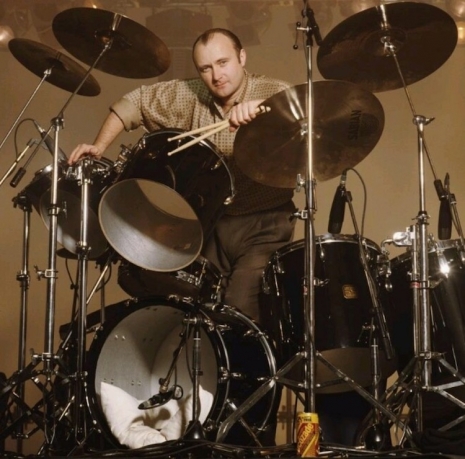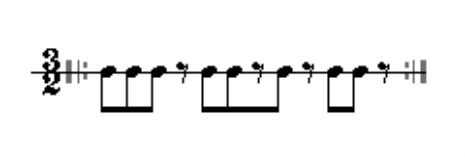
“Piano Phase” (1967) was Steve Reich’s first composition to use phasing in live performance—he had already tried it with taped music. The concept here is that you have two pianos playing the same repetitive lines of music but at very slightly different speeds, which means that over the course of several minutes the two melodies will overlap (almost) perfectly at certain points and then gradually diverge, which creates interesting tonalities. Todd Tarantino explains:
The score presents a handful of rotations of a twleve-note figure that is played in twelve variations. In its first presentation the theme begins on the first note; the first variation begins on the second note and ends on the first note; the second variation begins on the third note and ends on the second and so forth until all the rotations of the figure have been played. Alone it would be a simple, quick and relatively dull score. However the process by which the variations proceed is where the interest lies. Reich asks the first piano to begin by playing the theme alone. The second piano joins when the theme is sufficiently established. While one piano keeps the initial tempo, the other speeds up ever so slightly which causes the two to become out-of-sync for a moment before the second pitch of the slowing down piano locks with the first pitch of the steady tempo piano. This process repeats until the two return to unison. It sounds more complicated than it actually is.
As Tarantino drily concludes, “It is quite difficult to play.” Yeah—it sure seems like it!
You can see part of the score on Tarantino’s site as well. Indeed, as delightful as the challenge of humans playing may be, the optimal performance of “Piano Phase” would be undertaken by computer, as only a computer can perfectly track the almost imperceptibly slow alterations in phase that are so integral to the work. And that has happened—on Vimeo there is a surprisingly entertaining rendition of the composition performed by an “ER-101 Indexed Quad Sequencer and some other eurorack modules.” (What makes it entertaining is that we can watch the user setting the sequence up.)
Google Creative Labs honcho Alexander Chen has created a fun web app called, appropriately enough, Piano Phase in which you can see the notes being played (by computer) as well as hear them. Appropriately, as if to mirror the inherently cyclical nature of the work, Chen has two differently colored dots trace lines up and down (to represent pitch) around a circle, rather than scrolling endlessly to the right as in a traditional score.
Chen writes:
This site is based on the first section from Steve Reich’s 1967 piece Piano Phase. Two pianists repeat the same twelve note sequence, but one gradually speeds up. Here, the musical patterns are visualized by drawing two lines, one following each pianist.
The sound is performed live in the browser with the Web Audio API, and drawn in HTML5 Canvas.
The app does interesting visual things if you pause the music to read the “about” text and also if you click and drag anywhere in the browser. Play around with it, it’s pretty cool.
Two mesmerizing performances of “Piano Phase” after the jump….
Posted by Martin Schneider
|
07.16.2014
03:11 pm
|









